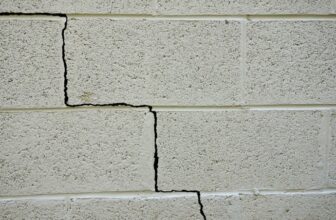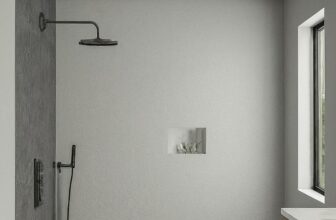
Planting Wall creation tips in Your Own Urban Yard. Making a planting wall may seem complicated. You will understand that a good design phase will have much of the work done with this step-by-step guide. The planting walls are amazing and spectacular. They save space and easy to maintain without having a large terrace or a garden; you just need a wall. However, you may face a problem if they are not correctly designed and maintained.
I remember the first planting wall that I made with pallets that I had at home. They were beautiful, perhaps it is because I like to do the planting, but it amazed me. The problem came when the months passed, and the time I dedicated as a caretaker, they did not end up staying like the first day.
Then, I started to investigate what I was doing wrong. I discovered that I was doing everything wrong. It was my mistake that I did not choose the necessary materials according to the requirements. Also, I had not considered the most important factors when cultivating a planting wall. Today, I have compiled all my notes, articles and techniques so that you can start a garden from 0 and watch it grow freely.
Factors that guarantee the success of a vertical garden:
1. How you can create a planting wall?
You can grow aromatic plants on the exterior walls near to the water point and the kitchen. If you are tired of going daily to the market to buy vegetables, take it easy! You can plant vegetables and fruit too.
Its installation and maintenance are one of the simplest in outdoor gardens. You can also maintain your house’s indoor with the planting wall as a decoration piece like in terrace or drawing-room.
2. How the plants set on the wall?
There are various systems to support the vertically attached plants on the wall. Some wall gardens are with frames made of wire mesh in which you fill soil or substrate. It intends to provide support for the roots of the plants. This system is suitable for your wall and depends on the conditions of the place.
3. The substrate
The substrate is a vital part of the planting wall. There are many options for it, but all have to meet these two requirements:
- It must be light
- It must be rich in nutrients
Options
- The mix of 60% coconut fiber with 40% earthworm humus
- Professional substrate enriched with blond peat or pearl
- Do not put soil, or take advantage of the first substrate you find, make this small investment and see how your vertical garden lasts longer.
4. Few hours of sunlight daily
It is essential to provide four to five hours of sunlight daily to grow a beautiful planting on the wall. Sunlight has tremendous benefits that help the planting wall to develop better, and it also enhances the beauty of it.
5. The required material
Use lightweight and durable materials, so you can focus on taking care of plants, which is the most rewarding part.
Recommended Materials
Here are some useful materials to create a planting wall.
Plastic
Many people use it because of its lightweight and durability. Choose good quality and UV resistant plastics.
Felt
All types of polyester felts are not suitable, but the non-woven is the most suitable. You can recycle it and can use it again in another place. It is very lightweight and resistant to fungi and ultraviolet rays. Besides, its maintenance is easier than plastic. However, you can easily change the place of plants that you have grown on the wall without any significant requirement. It also saves the roots when you want to replace the plants.
6. Design on your choice
Once you have chosen the material and the substrate, the elegant and beautiful part remains to consider. Some designs will look beautiful on it. You can use your strategies to set it in your own ways. Do not need to design it in a traditional style. You first need to consider some necessary factors to set your planting wall properly. After that, it depends on your choice of how you design your wall.
Choosing the right plants is essential to ensure the active growth of your planting wall, no matter if it is an edible or ornamental one. It is as necessary to choose them well as to know how to place them strategically.
7. The determining factor: Needs of substrate volume
A fairly common mistake, which I made myself, was not being generous with the amounts of substrate per plant. In the case of modular gardens or felt bags, you should consider each unit or bag as an individual pot. Generally, the capacity of prefabricated planting walls and gardens is 2-3 liters per plant. So, we are free to plant salad, aromatic and horticultural leaves, such as garlic, onions and beets and strawberries. You can have a wall full of Strawberries if you maintain it with responsibility.
It is better to forget about tomatoes, beans or peppers in this case. Personally, I have only seen them thrive in professional hydroponic vertical gardens, or large substrate capacity (which require a much more expensive and professional installation).
Here is a list of aromatic and horticultural plants suitable for vertical gardens:
- Salad leaves
- Lettuce
- Spinach
- Endive
- Cannons
- Watercress
- Arugula
- Coriander
- Basil
- Stevia
- Oregano
- Parsley
- Chive
- Thyme
- Rosemary
- Mint
- Peppermint
- Sage
- Chamomile
- Marjoram
- Dill
- Flowers
- Nasturtium
- Tagetes
- Calendula
- Beet
- Garlic
- Onion
- Radish
- Fruits
- Strawberries
8. Placement of the plants
Strategically placing the plants is an essential part of determining the active growth of the planting wall. If the plant’s placement is not suitable, it will not grow properly and then dry after some time.
9. Shape and size
Consider the shape and size of big plants, they do not overlap. If the plant has grown much more than the wall space, you can cut its extra leaves. It will look well-maintained, cleaned and beautiful. Does it grow up, like mint and rosemary? Does it tend to expand to the sides, like lettuce? Is it fall over time, like nasturtiums or chives? You must consider all these questions to prevent the plants cover each other or overlap; it reduces the photosynthesis, ultimately affects the growth.
10. Water requirement
In this particular case, water is an essential part of the planting wall system. You must provide the required water in all vertical plants. However, it is good to shower the plants daily – it must be wet all the time to be fresh.
The advantage of interchangeable pockets
As I have mentioned above that it is essential to change the placement of plants. However, changing the place of the plant in the vertical garden can significantly improve the environment and make your wall looks more beautiful. Besides, this practice also proves to be healthy for plants. The pocket system in the planting wall is one of the most favorable benefits. You can easily replace the plants anytime.
Conclusion
You have seen so many tips that will definitely help you making a planting wall. However, you must consider some essential factors to use proper materials that suit your wall. You can also make some designs on it, so it looks like a decorative item.




